I’m planning to buy a new 5-inch BNF FPV drone with the DJI O4 Pro Air Unit for freestyle, cinematic and possibly some long range flying, so I thought this would be a great opportunity to document my thought process and explain how I decide which model to get.
The DJI O4 Pro was only released last month, but there are already a few solid options that support it. However, with so many factors to consider—performance, durability, ease of repair, and value for money—picking the right one isn’t always straightforward.
In this post, I’ll compare the top BNF drones that come ready to fly with the DJI O4 Air Unit, analyzing their specs, design, usability, and long-term reliability based on my experience.
Let’s break it down.
Table of Contents
The Contenders: 5-Inch BNF Drones with DJI O4 Pro Air Unit
Here are some of the most notable Bind-and-Fly (BNF) 5-inch FPV drones currently on the market that support the DJI O4 Air Unit:
 | Axisflying Manta 5 SE | AliExpress: https://s.click.aliexpress.com/e/_oFjgiT8 Banggood: https://oscarliang.com/product-o7jd |
 | GEPRC Vapor D5 | AliExpress: https://s.click.aliexpress.com/e/_ompjqMI Banggood: https://oscarliang.com/product-23il |
 | DeepSpace SEEKER5 DC | AliExpress: https://s.click.aliexpress.com/e/_ompk5eI NBD: https://oscarliang.com/product-fcn9 |
 | iFlight Nazgul DC5 ECO | AliExpress: https://s.click.aliexpress.com/e/_op4dFEW |
 | iFlight Nazgul Evoque F5 V2 | AliExpress: https://s.click.aliexpress.com/e/_oCEDWWi |
 | iFlight SH CineFlow 5 | AliExpress: https://s.click.aliexpress.com/e/_oBZdpAe |
 | iFlight Afterburner Sport O4 | AliExpress: https://s.click.aliexpress.com/e/_oDHvs34 |
Each of these drones comes pre-built with DJI O4, making them great choices for pilots who don’t want to build their FPV drone from scratch. But how do they compare in weight, durability, repairability, and overall performance?
Let’s dive into the details.
O4 Pro or O4 Lite?
Personally, I prefer the O4 Pro on a 5-inch drone. As mentioned in my DJI O4 Pro review, the Pro version is better in almost every way except for weight and price. So unless you’re flying a micro drone, the O4 Pro is the better choice for a 5-inch build, in my opinion.
Unfortunately the Axisflying Manta 5 SE only comes with the O4 Lite, which is a dealbreaker for me. It also uses the Axisflying aluminum case, which I discussed in my previous post—I don’t think it justifies the high price. I previously reviewed the Manta 5SE and really like the frame design, and I wish it came with the O4 Pro instead. Hopefully, Axisflying will release another version in the future with the full O4 Pro system.
I reviewed the O3 version – while it’s a different air unit but the specs are similar, get a sense how it performs: https://oscarliang.com/axisflying-manta-5-se-analog-bnf/
Weight – How Heavy Are They?
Weight plays a huge role in flight performance, efficiency, and durability. A lighter quad is more agile and efficient, while a heavier quad tends to suffer from shorter flight times and fly like a tank—great for stability, but not ideal for freestyle agility.
Here’s a breakdown of the takeoff weight (excluding battery and GoPro) for each model:
| Model | Weight (without battery/GoPro) |
|---|---|
| Axisflying Manta 5 SE | 391g (±10g) |
| DeepSpace SEEKER5 DC | 428g (±5g) |
| GEPRC Vapor D5 | 437g (±10g) |
| iFlight Nazgul DC5 ECO | 450g (±5g) |
| iFlight Nazgul Evoque F5 V2 | 436g (±5g) |
| iFlight SH CineFlow 5 | 488g (±5g) |
| iFlight Afterburner Sport O4 | 490g (±5g) |
Are Side Plates Dead Weight?
One thing I really dislike about some of these BNF quads is the bulky plastic side plates. While they may look nice and offer some protection, in many cases, they are just dead weight that:
- Compromises airflow to the electronics, potentially reducing cooling.
- Makes it harder to take apart the quad for maintenance and repairs.
- Adds unnecessary weight, reducing efficiency and agility.
Just take a look at the weight difference between the Axisflying Manta 5 SE and the rest. By not using side plates, you can potentially save up to 30g, as I also demonstrated in my post “How to make your FPV drone lighter“.
Luckily, some of these quads—like the Seeker5, Vapor D5, and CineFlow—allow you to remove the side plates if you prefer a lighter, more accessible build. However, the iFlight Nazgul might prove more challenging since the side plates appear to be an integral part of the frame design.
This is the Seeker5:
This is the Vapor D5:
This is the Cineflow:
If weight and ease of repair are priorities for you, consider going for a model with removable side plates or a minimalist frame design.
Frame Design
For freestyle flying (or just flying in general), the iFlight Afterburner Sport stands out as the least practical frame when it comes to maintenance. Just looking at the sheer number of screws and parts, I can already tell it’s going to be a pain to repair or replace components.
On its product page, iFlight claims that the Afterburner Sport is “designed to push the boundaries of speed, agility, and durability.” But here’s what confuses me:
- It uses the 2207 motors just like the Nazgul and many other BNF drones.
- Yet, it’s 30g to 50g heavier than comparable models.
- If weight is directly tied to agility and speed, how does a heavier drone “push boundaries”?
- You will, for sure, get props in camera’s view. To get any useful cinematic footage you will have to use a GoPro on top which makes it even heavier.
If you want something that looks unique, maybe the Afterburner Sport will appeal to you. But for me, it just doesn’t make sense, and I’ll likely exclude it from my options.
Props in view?
Personally, I’d go for a deadcat frame design because the DJI O4 Pro has an extremely wide field of view (FOV). A deadcat-style frame is much better at keeping props out of the camera’s view compared to a True-X frame.
If you’re new to frame configurations, check out this guide: https://oscarliang.com/fpv-drone-frames/#Configuration
Camera Protection
A good DJI O4 setup needs proper camera protection and soft mounting to get clean footage.
- Soft-mounted camera? – Helps reduce jello and vibrations.
- Camera protection? – Does the camera stick out too much? Is the frame designed to protect the camera in crashes?
| Model | Soft-Mounted? | Camera Protection? |
|---|---|---|
| DeepSpace SEEKER5 DC | Yes | TBC |
| GEPRC Vapor D5 | Yes | Yes |
| iFlight Nazgul DC5 ECO | Yes | No |
| iFlight Nazgul Evoque F5 V2 | Yes | No |
| iFlight SH CineFlow 5 | Yes | No |
All of the iFlight BNF quads seem to have the O4 camera sticking out a lot, making it more vulnerable in crashes.
This is the Nazgul ECO:
This is the Nazgul Evoque:
The GEPRC Vapor D5 provides decent camera protection, which is a plus. As for the DeepSpace SEEKER5 DC, I couldn’t find images of it with an O4 camera, but looking at its O3 version, it seems to offer decent protection as well.
Ease of Repair
Drones crash and break—that’s just the reality of FPV. A well-designed frame should be easy to take apart for repairs and upgrades.
The DeepSpace SEEKER5 DC has a unique split top-deck design where the camera cage has its own top plate. This means that to access the FC stack and VTX, you only need to remove six screws of the secondary top plate—a brilliant design choice for easy maintenance.
For the rest of the quads, you’ll typically need to remove the entire top plate to access the electronics:
- GEPRC Vapor D5 – 10 screws
- iFlight lineup – 8 screws
To be honest, this isn’t a dealbreaker since you won’t need to take the quad apart that frequently. But if easy maintenance is a top priority, the Seeker5 DC is worth considering.
Here’s the Vapor D5:
Here’s the Nazgul ECO:
Here’s the Nazgul Evoque:
Here’s the Cineflow:
Durability
Durability is key, especially for freestyle and bando flying. Thicker carbon fibre and a strong frame design help quads survive crashes better. Thicker arms also increase stiffness and reduce vibration which is crucial to ease of tuning. Some quads use 6mm thick arms for durability, while others go with 5mm to save weight.
| Model | Arm Thickness |
|---|---|
| Axisflying Manta 5 SE | 5.5mm |
| DeepSpace SEEKER5 DC | 5.0mm |
| GEPRC Vapor D5 | 5.0mm |
| iFlight Nazgul DC5 ECO | 5.0mm |
| iFlight Nazgul Evoque F5 V2 | 6.0mm |
| iFlight SH CineFlow 5 | 5.0mm |
I’ve personally flown the Nazgul ECO (analog version) a lot, which has 5mm arms. In my experience, they offer plenty of stiffness and minimal vibrations. Would 6mm arms be more durable? Probably. But the tradeoff is extra weight. For most people, 5mm arms should be fine unless you’re constantly flying in high-risk environments (bando diving, hardcore freestyle, etc.).
Flight Controller and ESC
In terms of FC and gyro, there’s nothing out of the ordinary—all these options should work just fine. New to FCs? Learn about the different processors and gyros here: https://oscarliang.com/flight-controller/
When it comes to ESCs, all the options in the table should work well, but there’s one important thing to note:
- BLHeli_32 can no longer be updated: https://oscarliang.com/end-of-blheli_32/
- Some BLHeli_32 ESCs can be flashed to AM32, but it’s a hassle and not always supported.
Existing BLHeli_32 ESC will continue to work as they are, so it’s not really a dealbreaker, but keep it in mind if you care about futureproofing.
The BEC is basically a voltage regulator on the FC that can be used to power the DJI O4 Air Unit. While the O4 Pro can take direct 6S LiPo voltage, using a BEC is still recommended because it acts as a power filter, protecting the air unit from potential voltage spikes and damages.
At 1200mW output power, the O4 Pro consumes around 10W to 11W, so a BEC with at least 9V 2A output is required for stable operation.
Note: The iFlight Evoque F5 V2 and SH CineFlow 5 use the BLITZ Mini F7 FC, which doesn’t have a built-in BEC for the DJI O4 Air Unit—you’ll need to power it directly from the battery (VBAT), which means you lose filtering and voltage protection.
| Model | FC/Gyro | ESC | BEC for DJI O4 |
|---|---|---|---|
| Axisflying Manta 5 SE | F405 / ICM42688 | 60A Bluejay | 12V 2A |
| DeepSpace SEEKER5 DC | F722 / ICM42688 | 60A BLHeli_32 | 12V 2.5A |
| GEPRC Vapor D5 | F722 / ICM42688 | 60A BLHeli_S | 9V 2.5A |
| iFlight Nazgul DC5 ECO | ATF435 / ICM42688 | 55A BLHeli_S | 9V 2A |
| iFlight Nazgul Evoque F5 V2 | F722 / ICM42688 | 55A BLHeli_32 | No (VBAT only) |
| iFlight SH CineFlow 5 | F722 / ICM42688 | 55A BLHeli_32 | No (VBAT only) |
Additionally, all these flight controllers include onboard Blackbox memory, which is critical for advanced PID tuning and filter adjustments. The Evoque and CineFlow has 8MB of memory (BLITZ Mini F7), the Nazgul ECO has 32MB (iFlight BLITZ ATF435), while the rest have 16MB.
Motor Size and KV
All these models use 2207 motors. The higher KV will be more powerful at the cost of being more power hungry. I think it’s becoming a trend in the hobby to use higher KV motors, while you don’t have to fly full throttle all the time, having extra power when you need it is a big advantage. For cruising at moderate speeds, small KV differences won’t significantly impact flight time—the motor design and overall drone weight have a bigger effect on efficiency. Personally, I prefer slightly higher KV motors for their versatility.
| Model | Motor Size & KV |
|---|---|
| Axisflying Manta 5 SE | 2207 1960KV |
| DeepSpace SEEKER5 DC | 2207 1960KV |
| GEPRC Vapor D5 | 2207 1960KV |
| iFlight Nazgul DC5 ECO | 2207 1800KV |
| iFlight Nazgul Evoque F5 V2 | 2207 1750KV |
| iFlight SH CineFlow 5 | 2207 2050KV |
GPS
The next consideration is whether the drone comes with GPS. I highly recommend getting a BNF with GPS, as it can save your drone one day if you lose signal—it might just fly back to you using Betaflight Rescue Mode.
Also, pay attention to where the GPS is mounted. The optimal location ensures quick and consistent satellite lock before and during flight. If it’s mounted too close to the VTX antenna (or worse, underneath it), GPS performance may suffer due to interference.
Personally, I like how the Seeker5 DC mounts its GPS—it’s positioned far away from all antennas (as long as you don’t put a GoPro on it). The CineFlow also has decent placement, as the GPS is above the VTX antennas, avoiding signal blockage. However, on most other quads, the GPS is placed under the VTX antennas, which should still work but not optimal.
| Model | GPS Available? | GPS Location |
|---|---|---|
| Axisflying Manta 5 SE | Yes, M10 | Under VTX antennas |
| DeepSpace SEEKER5 DC | Yes, M10 | On top of camera |
| GEPRC Vapor D5 | Yes, M10 | Under VTX antennas |
| iFlight Nazgul DC5 ECO | Yes | Under VTX antennas |
| iFlight Nazgul Evoque F5 V2 | Yes | Under VTX antennas |
| iFlight SH CineFlow 5 | Yes | Above VTX antennas |
Price & Overall Value
Finally, let’s compare pricing and see what you’re getting for your money. These prices include GPS, an ExpressLRS 2.4GHz receiver, and the DJI O4 Pro Air Unit.
.
| Model | Price |
|---|---|
| Axisflying Manta 5 SE (O4 Lite) | $339 |
| DeepSpace SEEKER5 DC | $574 |
| GEPRC Vapor D5 | $450.99 |
| iFlight Nazgul DC5 ECO | $484.99 |
| iFlight Nazgul Evoque F5 V2 | $694.99 |
| iFlight SH CineFlow 5 | $625.99 |
I have to admit—I’m tempted to get the Axisflying Manta 5 SE, swap out the O4 Lite for the Pro, and either sell the O4 Lite or keep it for a micro quad. But if you don’t want to deal with swapping components and just want to fly straight out of the box, the GEPRC Vapor D5 seems to offer the best value on paper. The iFlight Nazgul DC5 ECO is also priced reasonably, however for $34 more, it offers less: ESC and BEC are weaker, the motors have lower KV, and the camera has no protection.
I also really like the design of the DeepSpace Seeker5, and its specs look fantastic—but at $574, it’s a bit pricey.
As for the Nazgul Evoque and CineFlow, these are the only quads over $600, and honestly, I think they’re a bit overpriced based on their specs and design. For that money, you could get the Vapor D5 AND buy an extra set of O4 Pro as backup!
Final Thoughts – Which One I Am Going to Get
After weighing the pros and cons, I’ve decided to go with the GEPRC Vapor D5.
When it arrives, I’ll do a full review, including:
- Tuning its PID and filter settings
- Seeing how much performance improvement I can get
If you also want to get the Vapor D5, here’s the AliExpress affiliate link, which is where I’m ordering mine from: https://s.click.aliexpress.com/e/_ompjqMI
I’ll update this post if I get the chance to test more of these quads, but for now—which 5-inch BNF with the DJI O4 Pro Air Unit are you considering? Let me know in the comments!
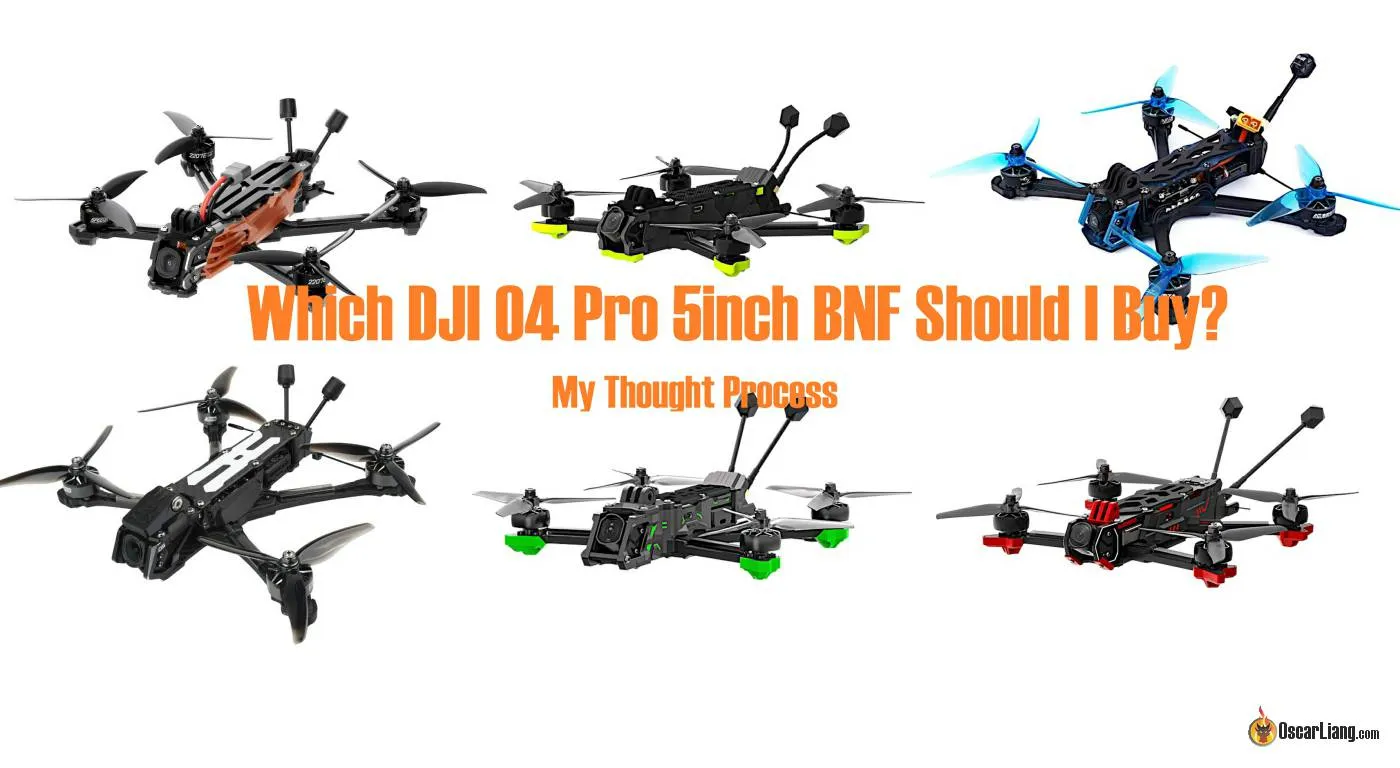


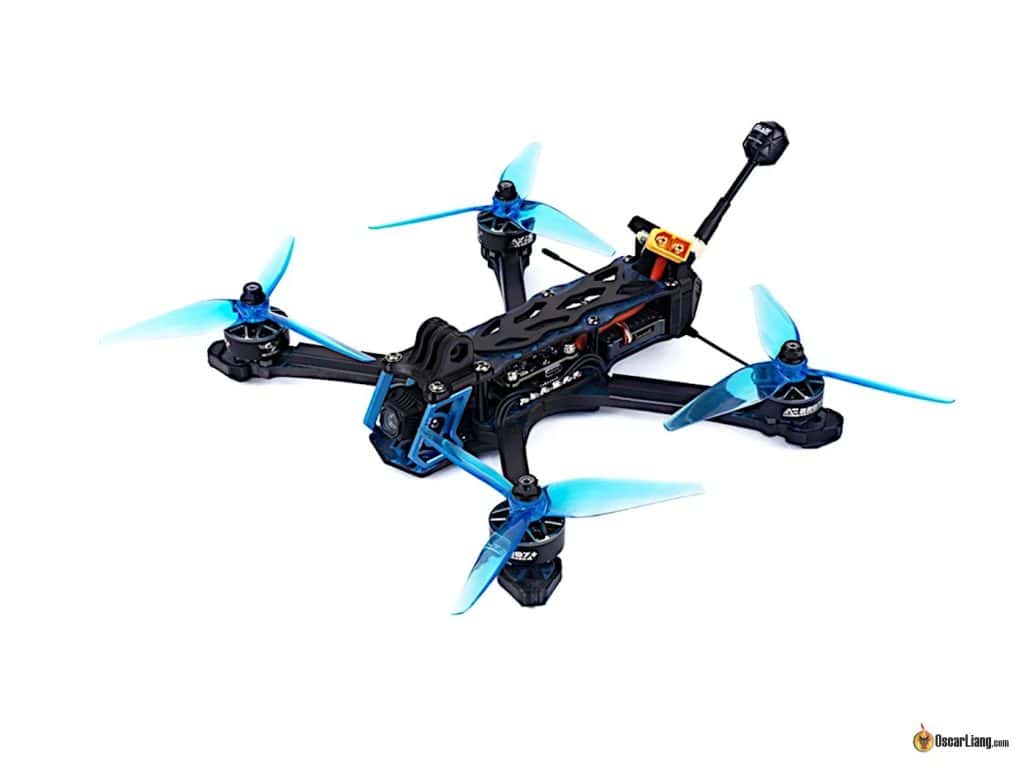
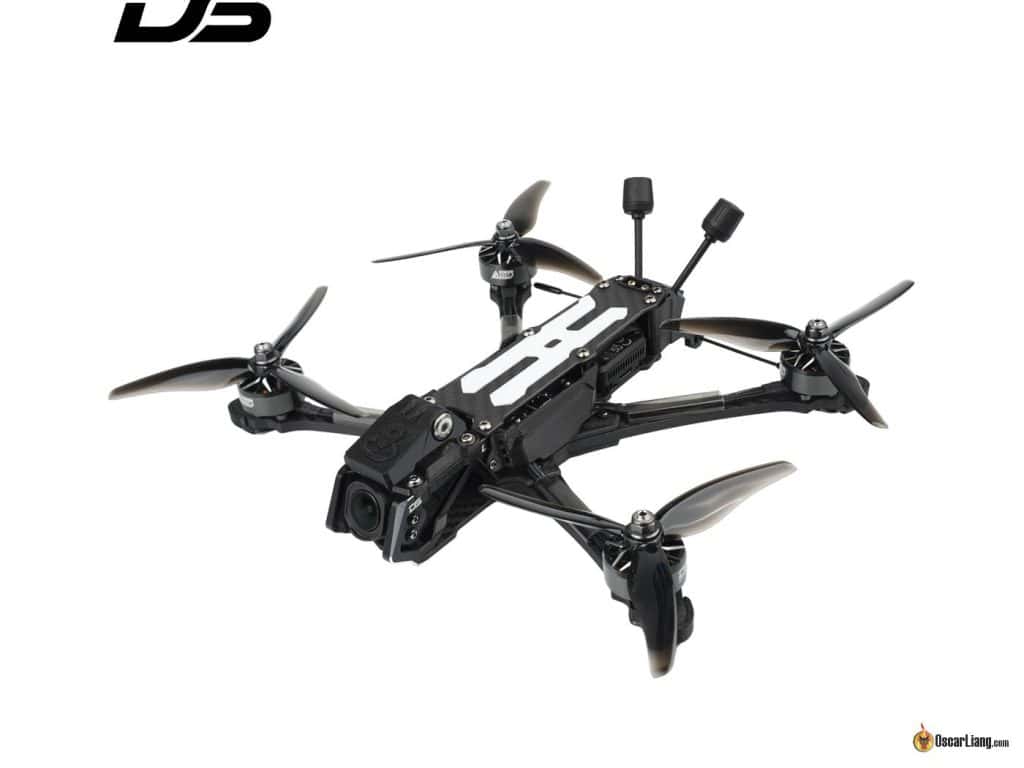
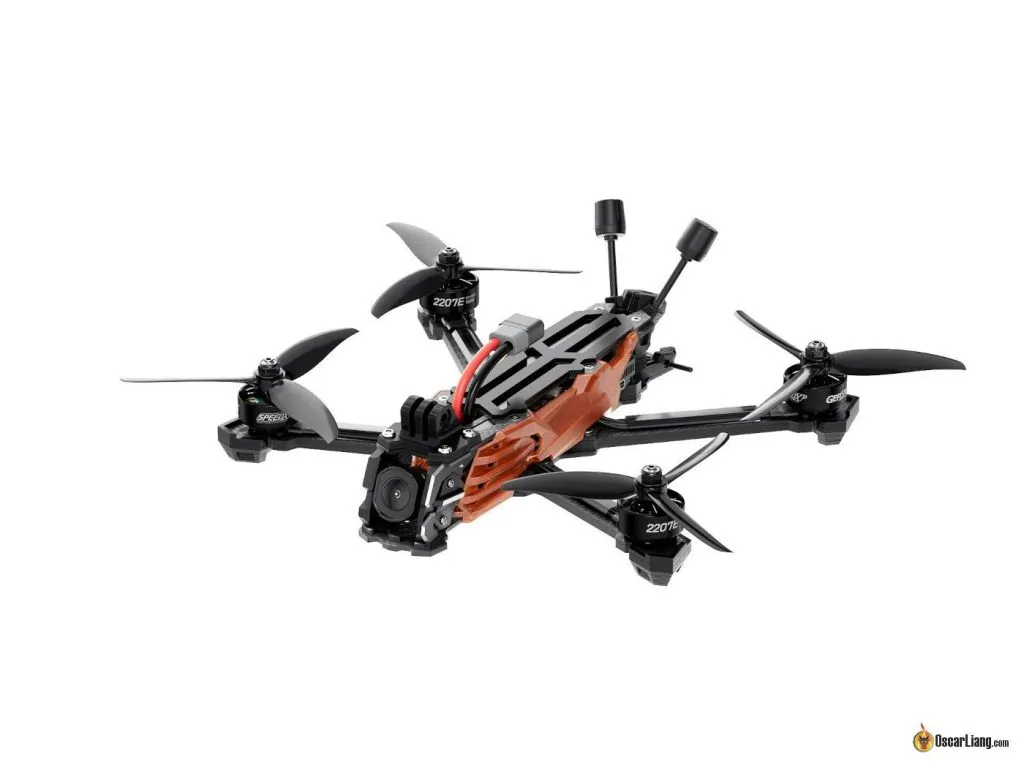
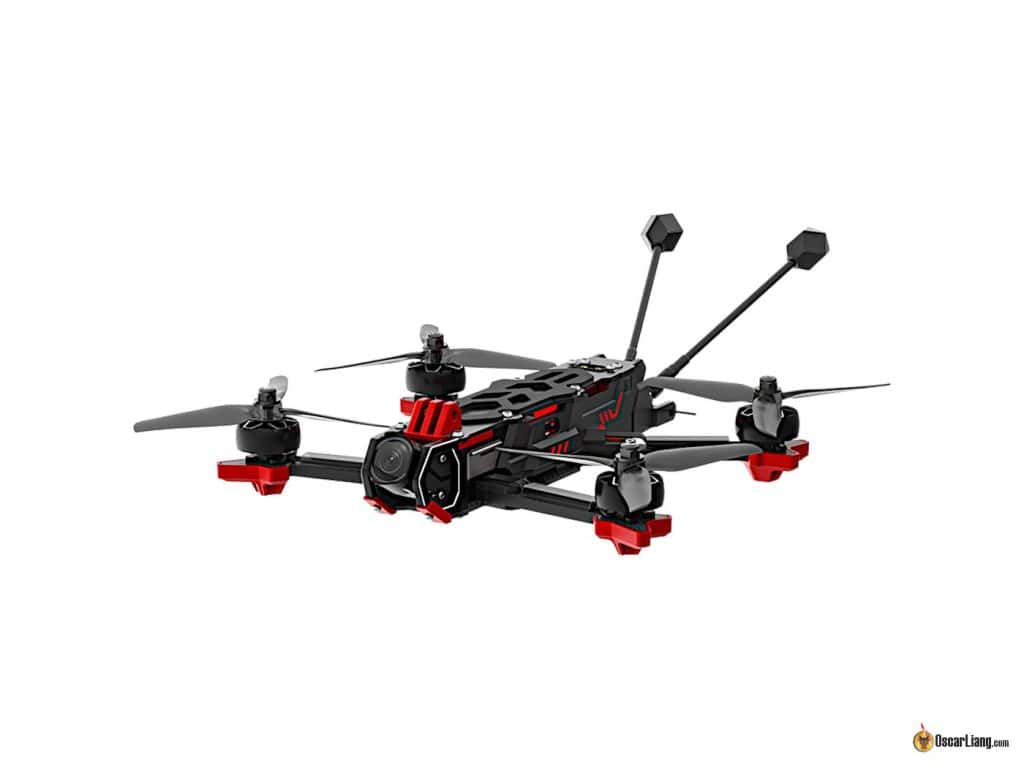
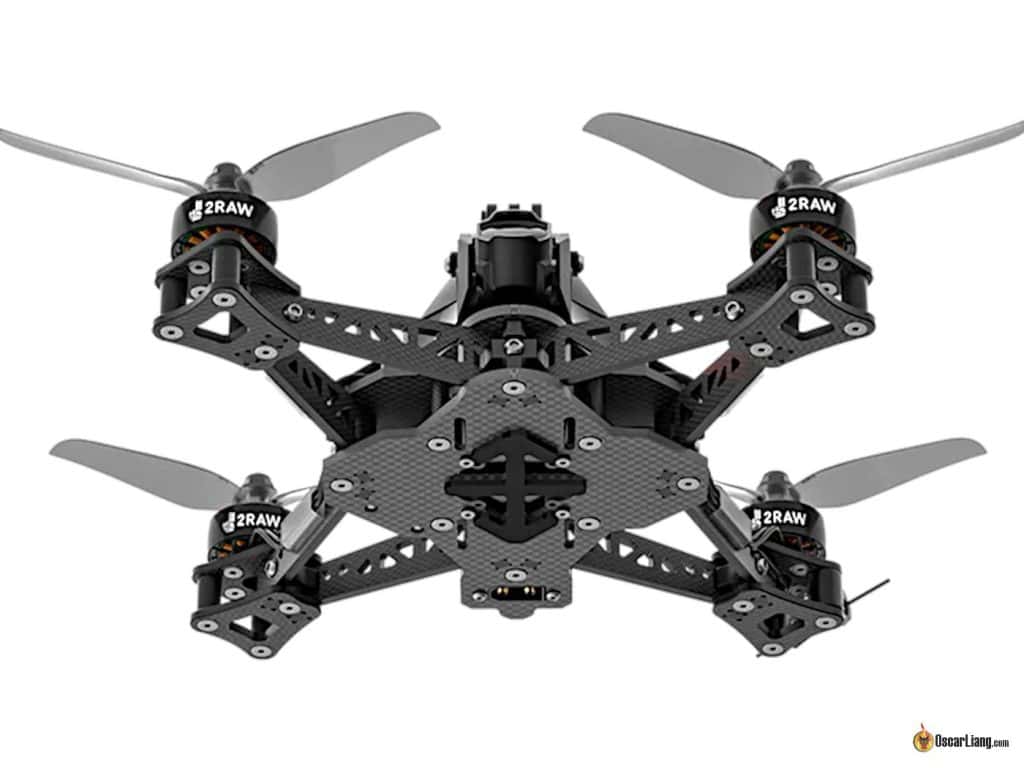
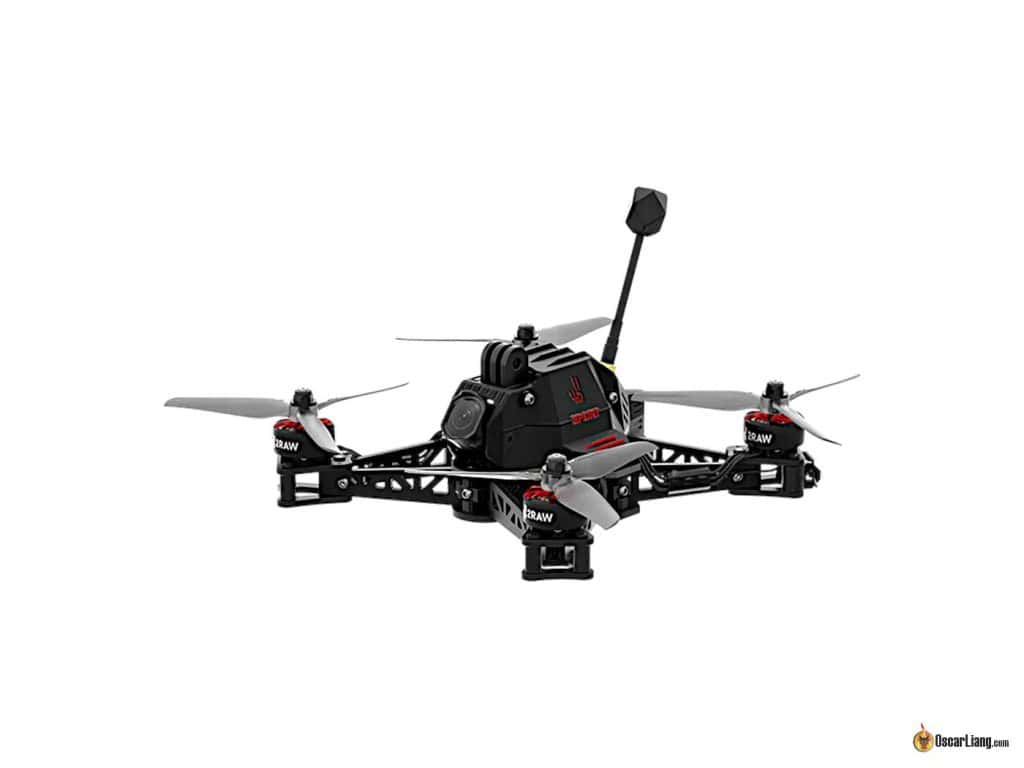
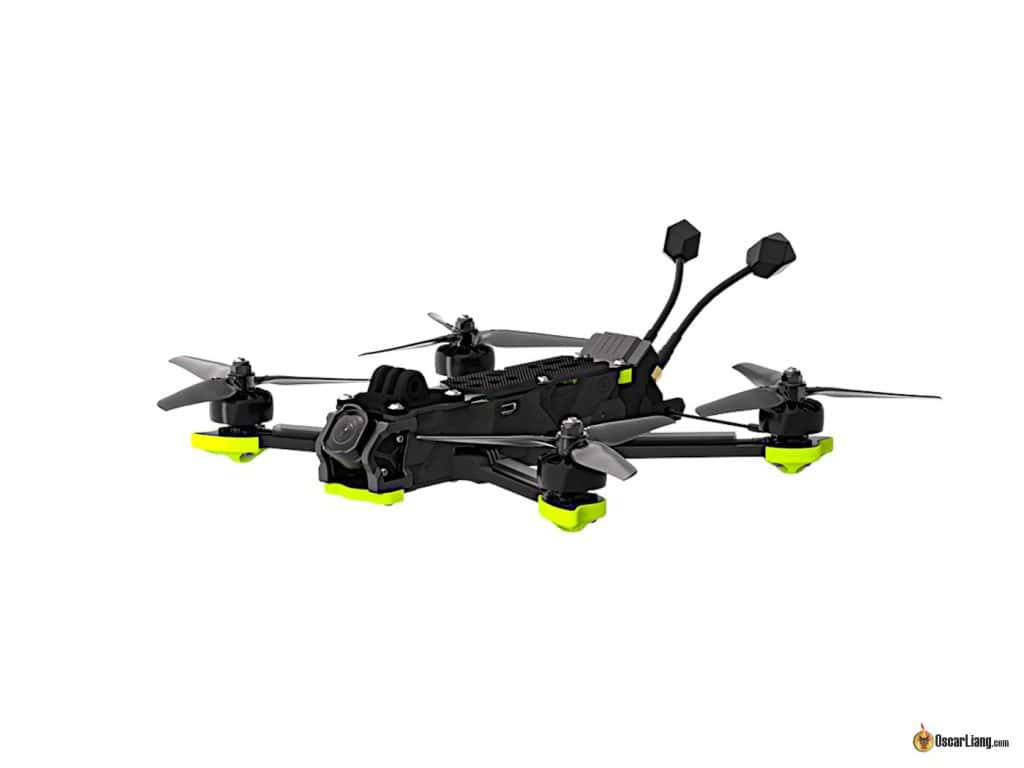
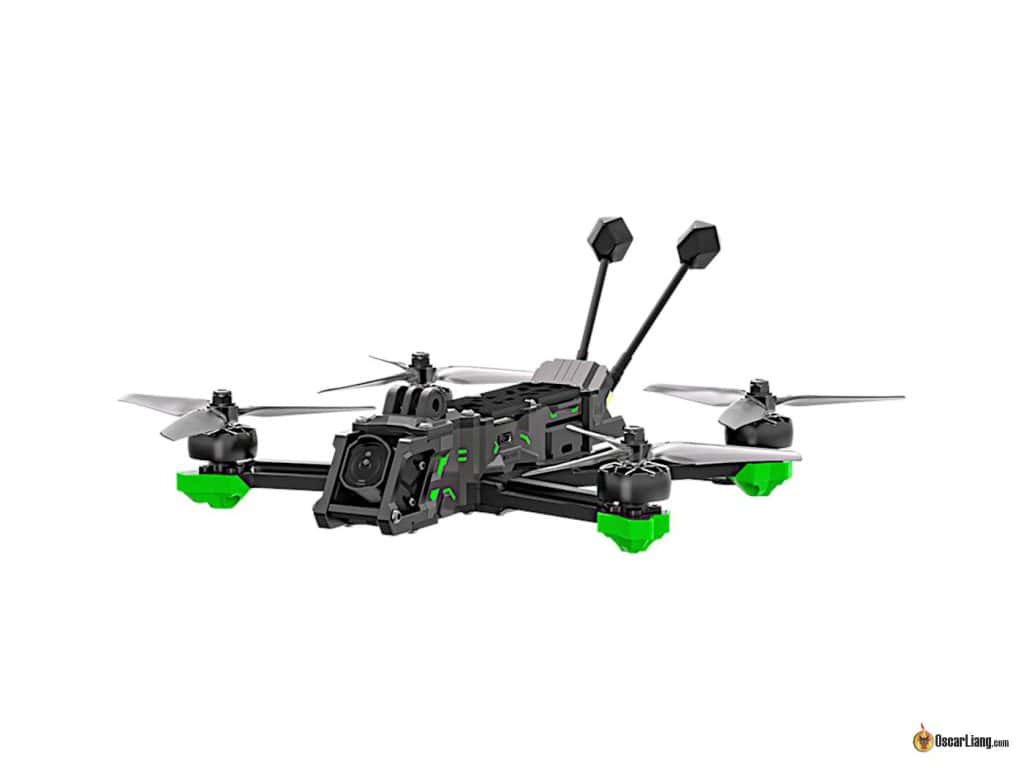
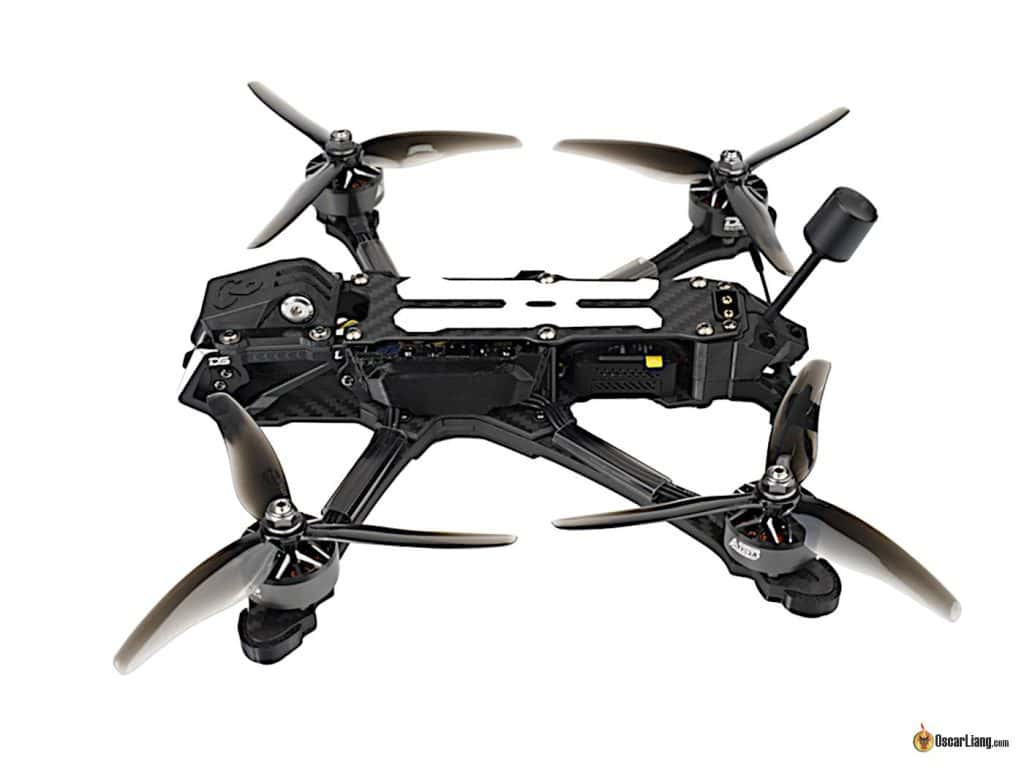

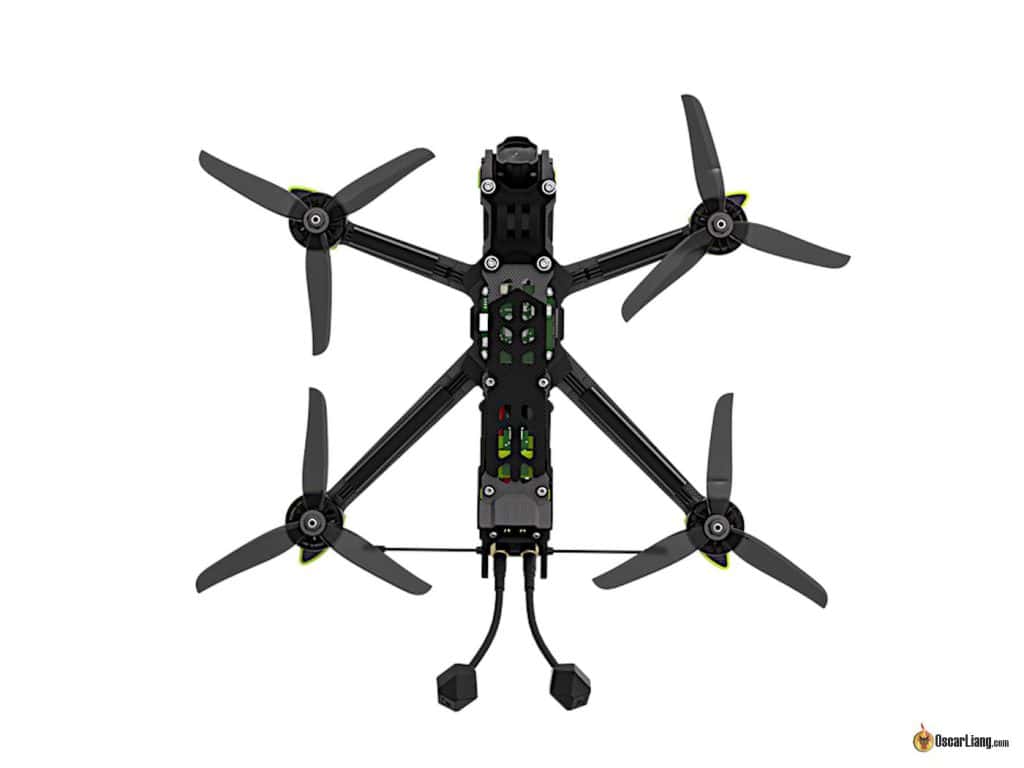
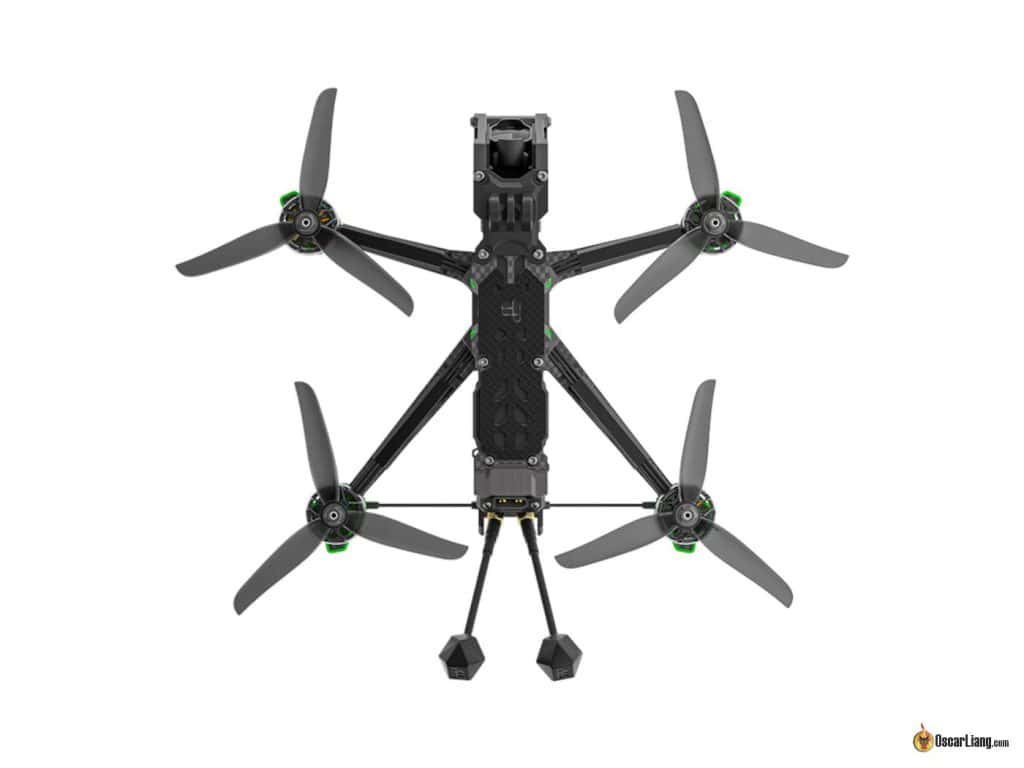
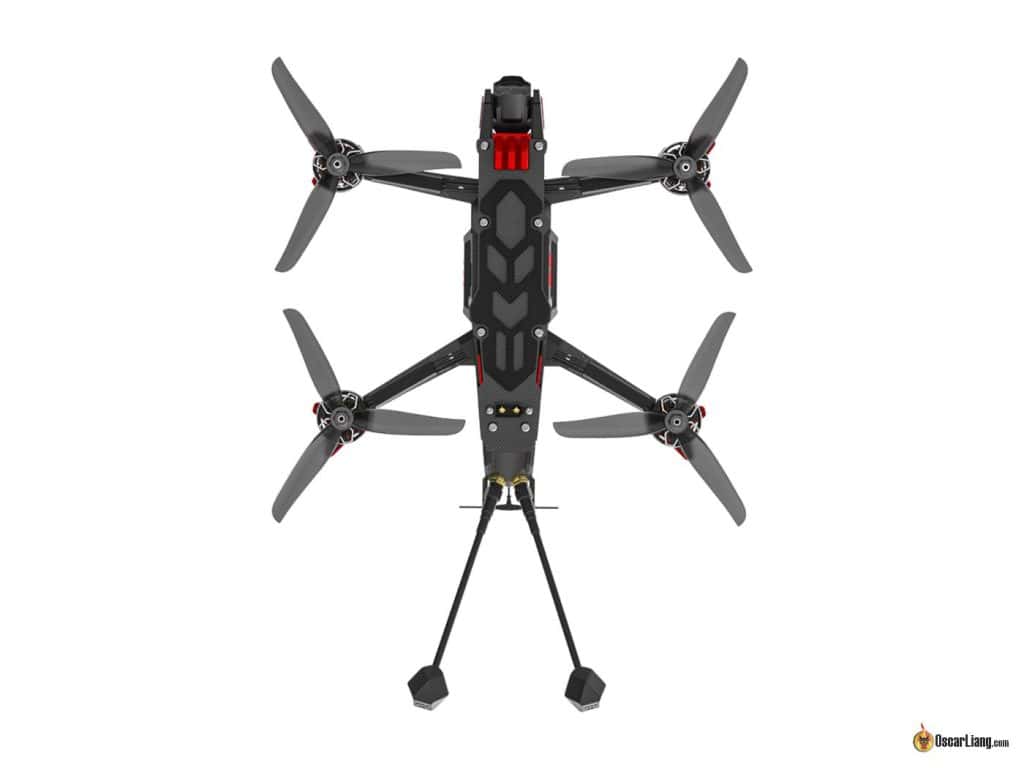
18 comments
Hey Oscar, I would be very interested seeing also the GepRC Mark 5 in comparison. What do you think of this frame?
I am trying to get it in for a proper review – though the Vapor still has better specs and features on paper for roughly the same price. For instance the Mark5 doesn’t have GPS and it doesn’t come with the O4 and you have to install it yourself. The XT60 connector is more versatile/easier to use on the Vapor. And the Mark5. And the Mark5 is a 2-3 years old design, they just updated the camera mount to fit the O4. Its main advantage is probably weight.
Hi there Oscar,
Here in the UK, the iFlight Nazgul DC5 ECO is £450 with the O3 Air, do you think it would be a good first freestyle quad with the DJI system?
thanks
Colby
I’m not sure which FPV goggles you have, but if they support O4 Pro, that’s what you should get. Paying £450 for a BNF with O3 means you’re paying full price for an O3, which isn’t worth it today. Unless you’re getting a good discount on the Nazgul, I’d recommend a BNF with O4, which costs about the same today. Also, iFlight’s drones are pricier than those from other manufacturers and not always the right choice—check out my comparison of the current 5-inch BNF with O4 Pro here: https://oscarliang.com/5inch-bnf-dji-o4-pro-comparison-feb-2025/
Thank you for this insightful comparison, exactly what I was looking for! I think for me the GEPRC Vapor D5 would be the best choice. I saw that there is also a GEPRC Vapor X5, could you please tell me what the differences are and which one you would recommend for what purpose? Also which parts are most likely to get damaged when crashing? So I know which parts I should order in advance, thanks :)
D5 = Deadcat 5-inch, X5 = X 5-inch.
D and X, these are the frame configurations: https://oscarliang.com/fpv-drone-frames/#Configuration
“I have to admit—I’m tempted to get the Axisflying Manta 5 SE, swap out the O4 Lite for the Pro”
Is it possible to do this swap, replacing the Axisflying DJI Unit O4 (Lite) with DJI Unit O4 Pro without adapters? In other words, would DJI O4 Pro camera fit in Axisflying Manta 5 SE frame without the need for extra adapters or modification? Thank you
It won’t be a direct swap, you will need some custom made 3D printed adapters.
Nice!.. Thank you
Hey Oscar, love the site! I just ordered a bunch of components following the “How to Build an FPV Drone Tutorial (DJI & Analog)” page, except I bought an O4 Pro. I’m assuming this won’t fit on the TBS Source One V5? What frame would you recommend for an O4 Pro (non-pnp/bnf I mean)? Do I need to get any other components different from that 2023 guide? For example, the Speedybee F405 V4 will still work with the O4? Thanks.
Hi, unfortunately no, the O4 Pro camera won’t fit the Source One V5, unless you use some sort of custom design adapter, like 3D printed ones, I haven’t checked so I am not sure such accessories are available yet. Almost none of the existing frames work with the O4 without customization or adapters, so unless you see the product page mentions “Supports O4”, it probably doesn’t work with the O4.
Check out my latest post on “which O4 Pro 5inch to get”, it’s about BNF, but I also touched on the frame design: https://oscarliang.com/5inch-bnf-dji-o4-pro-comparison-feb-2025/. Some of these quads sell the frame seperately.
What batt would you fly with the Vapor D5: 4S or 6S (either?). Thanks for all you do Oscar.
6S 1050-1300mAh LiPo for freestyle, and 6S 3000mAh-4000mAh for med/long range? Just regular batteries for 5″ quads, nothing special.
Does it really make sense to fly 3000mah lipos and even more for longrange on a 5″ quad? The weight increases much and I doubt that the standard motors will keep up and the actual flight time will increase proportional and reasonably. Have you tried a flight time test with 1300mah vs 3000mah batteries ?
If you want more flight time, it does make sense. The extra weight of a 6S 3000mAh Li-ion pack is only about the weight of a GoPro compared to a 6S 1100mAh LiPo. And that should double your flight time or more.
Your timing is fantastic! I was just starting to get itchy about finding a good 5” bnf with an O4
Noticed many of these are dc frames. But in the config section of your frame article it says dc might be problematic during aggressive freestyle
I really want a good freestyle 5” with an O4, no props-in-view, no gopro, that flies like telepathic magic. Could we possibly get a table for frame shape and prop visibility to help this hunt?
Betaflight has gotten very good these days, it should be able to make correction and shouldn’t be noticable for most pilots. Personally I wouldn’t worry about it really, deadcat is fine for freestyle. Unless you race professionally, then X frames are more desirable for sure.
Reading the article everything suggested to me that the Seeker would be the winner until I saw the price, too bad! I apply the same reasoning as you for all our flying toys and I find that very often manufacturers make tanks instead of flying drones. In France we have the Colomban planes which are very light and also the e-props propellers, the lightest in the world. It’s ingrained in our aviation culture to think “lighter is better”. I gave my 165gr Chimera4 to a friend to buy a 195gr Atlas4 with heavier motors, what a mistake! With same 18650 4s P30B the Chimera4 flies 5 minutes longer. I’m going to upgrade it to 04 “lite” and take lighter engines to rediscover the sensations of the Chimera4 (excellent one-piece frame which does not vibrate) Good flights with the D5.